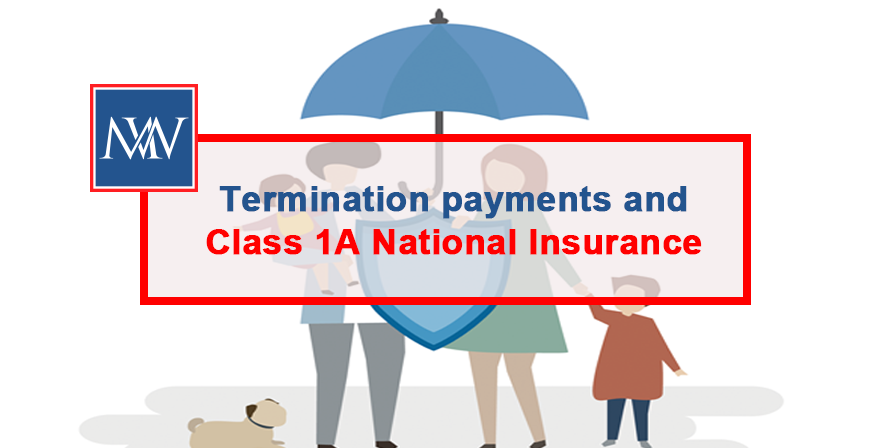
Termination payments and Class 1A National Insurance
Termination payments and Class 1A National Insurance
As the Coronavirus Job Retention Scheme comes to an end, employers with employees who are still on furlough will need to decide whether they are able to bring the employee back to work, either full time or part time, or whether they will have to terminate the employee’s employment.
When terminating an employee’s employment, the employer may need to pay Class 1A National Insurance contributions on a termination award made to the employee.
Taxation of termination payments: Recap
Where an employee’s employment is terminated, the employee may receive termination payments, such as pay in lieu of notice and ex-gratia lump sums, in additional to normal wages and salary payments.
Normal payments from the employment, such as salary and holiday pay, are taxed as earnings and are liable to employee’s and employer’s Class 1 National Insurance contributions. However, the treatment of termination payments depends on whether, and if so the extent, to which they exceed what is known as the employee’s ‘Post Employment Notice Pay’ (PENP). Detailed consideration of how this is determined is outside the scope of this article, but broadly, PENP is the amount that the employee would have earned had they worked their notice period.
PENP is taxed as earnings and is liable to employee’s and employer’s Class 1 National Insurance.
Where the employee’s termination payment exceeds their PENP, the first £30,000 of the excess is tax-free. Amounts over £30,000 are taxable but not liable to employee’s National Insurance.
Employer liability to Class 1A NIC
Where a termination payment exceeds the £30,000 threshold, since 6 April 2020, the employer must pay Class 1A National Insurance on the excess over £30,000 at 13.8%.
Unlike Class 1A National Insurance contributions on benefits-in-kind, the Class 1A payable on a termination payment is not included in the Class 1A liability reported on the P11D(b); instead it is reported to HMRC via Real Time Information (RTI) on the Full Payment Submission (FPS) for the period in which the termination payment was made to the employee.
The Class 1A National Insurance payable on the termination award must be paid over to HMRC with the tax and Class 1 National Insurance for that period, i.e. by 22nd of the month where payment is made electronically or by the 19th of the month where payment is made by cheque, rather than with the Class 1A on benefits in kind, which must be paid by 22 July after the end of the tax year where payment is made electronically (or by 19 July where payment is made by cheque).
Example
An employee has been on furlough since March 2020. In September 2021, his employer decides that they are unable to keep the employee on. The employee’s employment is terminated with effect from 1 October 2021.
The employee receives a termination payment of £100,000, paid to him on 1 October 2021. The employee’s PENP is £15,000. The excess over the PENP is £85,000 (£100,000 – £15,000), of which the first £30,000 is tax-free. The remaining £55,000 is taxable and liable to Class 1A National Insurance.
The employer’s Class 1A National Insurance liability is £7,590 (£55,000 @ 13.8%). The payment is made to the employee in month 6 (month to 5 October 2021). The employer’s Class 1A National Insurance on the termination payment must be paid to HMRC with the PAYE tax and Class 1 National Insurance for month 6. Payment must be made by 22 October 2021 where it is made electronically, or by 19 October 2021 if payment is made by cheque.
Employers terminating employees’ employments will need to budget for the Class 1A liability, as well as the cost of the termination packages.
For more information, Book a Free Consultation
Need Accountancy Support?
For information on bespoke training, or if you have any other questions for Makesworth Accountant, please fill in your details below
















 151
151